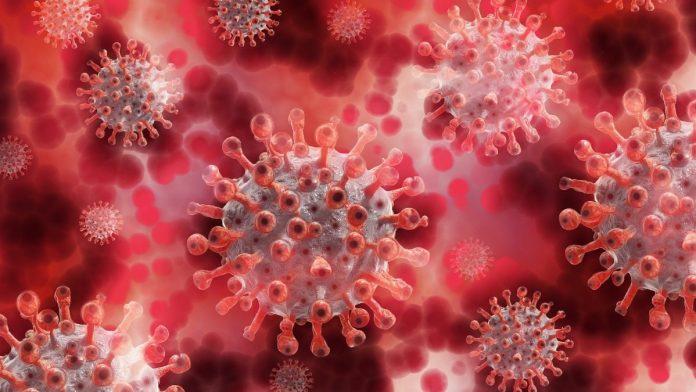Airborne Transmission of COVID-19: What Do We Know About it

Image Courtesy: Pixabay
A debate around the mode of transmission of the virus causing COVID-19 has re- surfaced recently. It started with a commentary supported by 239 scientists which raised the concern of airborne transmission of the virus. Following this, even the World Health Organisation has come out with fresh guidelines including the chance of airborne transmission of the virus.
However, the exact character of the airborne transmission and how far it could affect people are still inconclusive.
Let’s first begin what defines airborne transmission. It is when an infectious agent spreads through aerosol (droplet nuclei) and remains suspended in the air carrying the infectious capacity for a prolonged period over a long distance. Earlier during the progression of the pandemic, it was thought that viral particles in the form of droplets come out from an infected person when they cough or sneeze. These droplets are large enough to keep floating for hours in the air and also don’t move a long distance. That’s why the emphasis was on maintaining a distance of 6 feet was laid upon.
But, some experiments are suggesting the possibility of the virus being circulated in much smaller droplets (aerosol) with diameter less than 5 micrometres. This means the viral particles can remain afloat in the air for a much longer time and travel a long distance thus increasing the chance of infecting people. Also, it has been said that normal breathing and talking can result in exhalation of aerosols containing the viral particles.
A study published in PNAS suggests that people infected with SARS-CoV-2, if continue to talk loudly for a minute can generate over a thousand virus laden aerosols of diameter 4 micrometres and can remain in the air for at least eight minutes. The researchers inferred that even during normal talking there is substantial chance that airborne viral transmission can happen at least in confined environment.
Another study by Lidia Morawska and her team uploaded in the medrxiv preprint server says that people infected with the virus can exhale viral RNA in 1,000-1,00,000 copies. Morawska is one of the leading scientists who initiated the commentary supported by 239 other scientists.
Also read: COVID-19: Airborne Transmission and What Figures in Mumbai and Delhi Reveal
There are other laboratory studies. A report in the journal Emerging Infectious Diseases, published by CDC (Centre for Disease Control and Prevention), said that laboratory created aerosols of the novel coronavirus can remain infectious for 16 hours. These aerosols even have larger infectivity than the SARS and MERS, the study suggested.
These studies have been conducted in laboratory conditions and the aerosols were induced experimentally which may not reflect real life situations. There are also studies that were done inside health care settings such as a hospital where COVID-19 patients were treated and found aerosol containing the viral RNA.
This is where the question arises. Can the detection of viral RNA in the air be concluded as the presence of infectious viral particles? A viral particle or a virion comprises of the viral nucleic acid (DNA or RNA) with the outer protein code called the capsid. The virion is the active form, meaning it carries infectivity. Mere presence of viral RNA may not signify the active form of the virus. Apparently, this is the point the WHO is emphasising. According to WHO, till now, there is no study which has found viable virus in air samples.
Another point that needs to be considered is the way the aerosol samples are collected in studies. The aerosols are collected by devices that suck in air and in this process, the delicate envelope of the virus gets damaged. Notably, SARS-CoV-2 is an enveloped virus, which means it has an extra lipid coat besides the capsid. Julian Tang, a virologist at University of Leicester, UK said to Nature—“The lipid envelope will shear, and then we try and culture those viruses and get very, very low recovery.”
However, some studies claim to have successfully assessed the viability of aerosol borne viral particles. For example, the study published in The Journal of Infectious Disease also suggests that environmental conditions can play a big role in determining how long virus particles can remain viable in aerosol. They said that viability readily decreases with exposure to sunlight. Moreover, indoor environment can be specifically risky as they lack UV light and if ventilation is poor the virus can become more concentrated.
The possibility of aerosol transmission along with droplet transmission in closed and crowded environments are also suggested by other studies.
Regarding the infectivity of viral aerosols one big question that still remains unanswered is about the number of viral particles that are needed for triggering an infection.
Taken together, all the emerging researches on aerosol transmission mode of SARS-CoV-2 suggests the need of cautious interventions. Countries like Germany and UK have already stated the necessity of seriously looking into aerosol transmission. WHO’s acceptance of this was reflected in the words of Bendetta Allegranzi, technical lead of WHO for infection prevention and control, when she said—“The possibility of airborne transmission in public settings – especially in very specific conditions, crowded, closed, poorly ventilated settings that have been described, cannot be ruled out. However, the evidence needs to be gathered and interpreted, and we continue to support this.”
Get the latest reports & analysis with people's perspective on Protests, movements & deep analytical videos, discussions of the current affairs in your Telegram app. Subscribe to NewsClick's Telegram channel & get Real-Time updates on stories, as they get published on our website.














